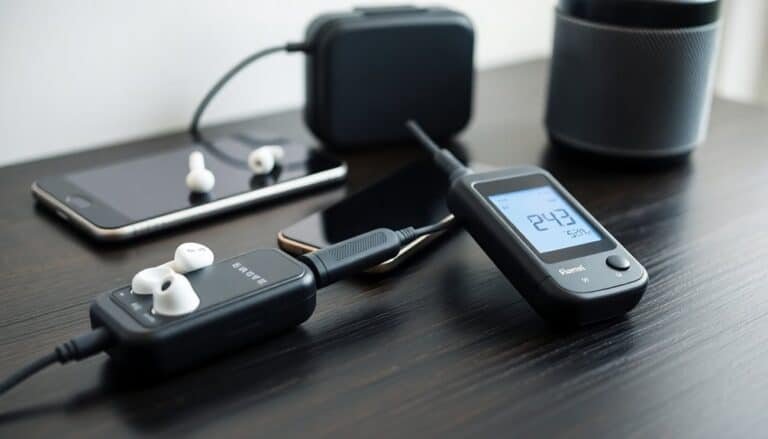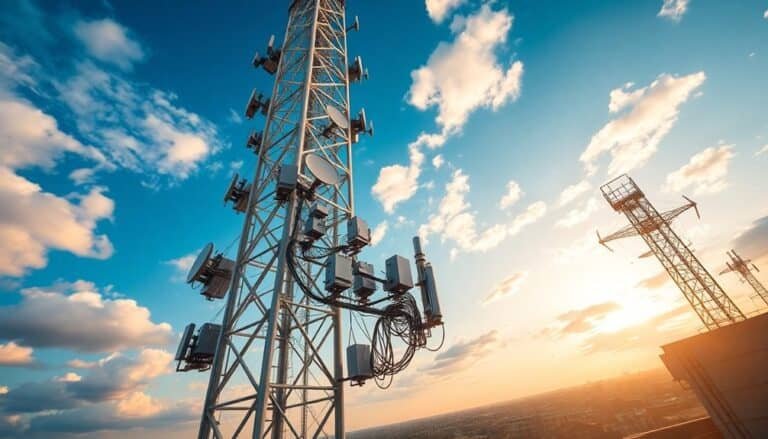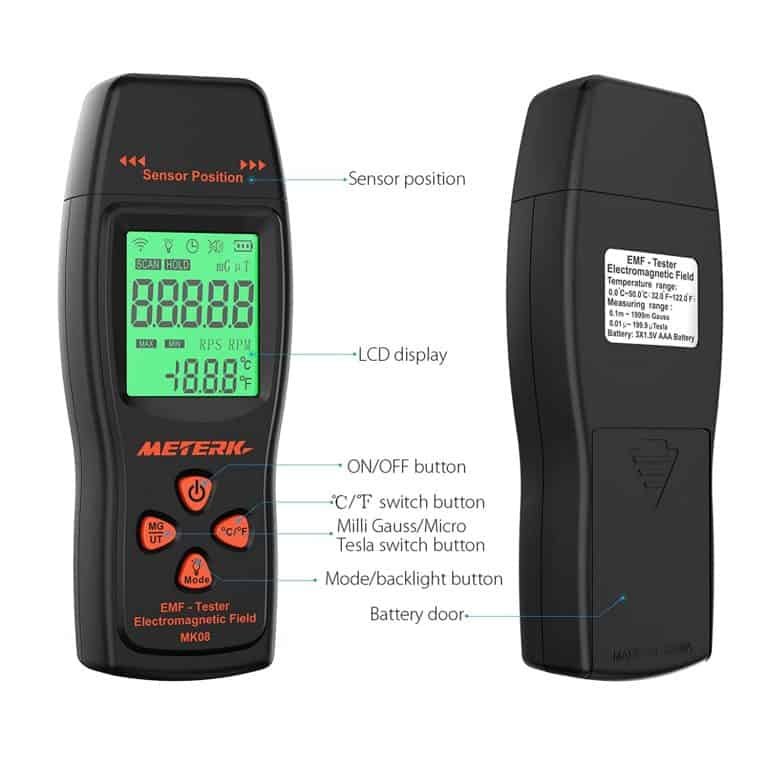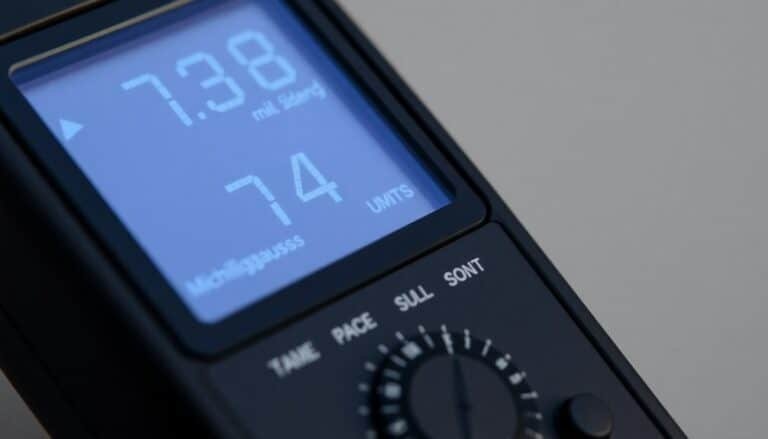Calibrating and Testing Your EMF Meter
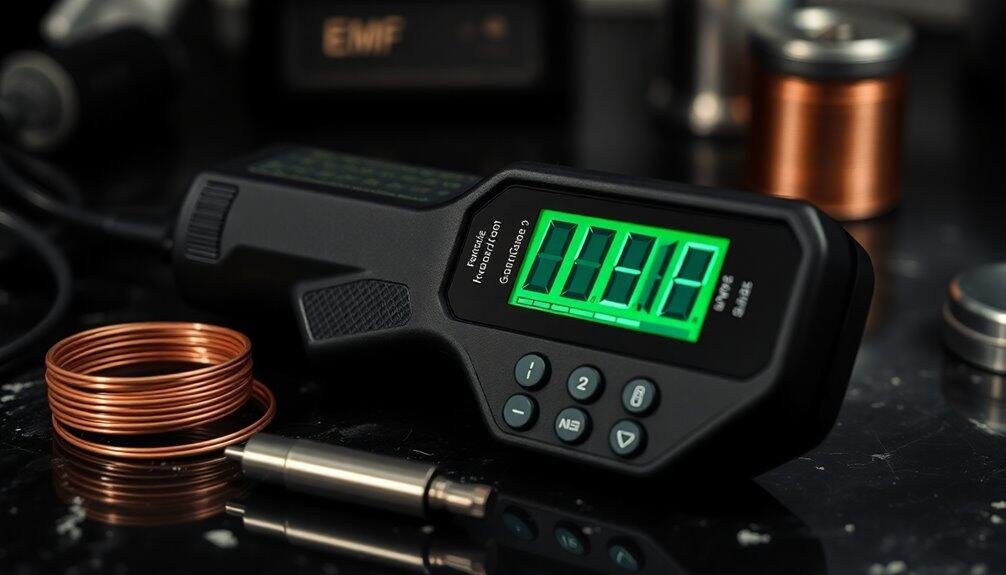
To ensure accurate EMF measurements, calibrate your meter’s zero point and align it with reference standards using NIST-traceable calibrations. Check its performance across frequencies from 300 MHz to 6 GHz, and consider anisotropy for consistent readings.
Adhere to safety standards and maintain compliance through ongoing evaluations. By mastering these techniques, you’ll significantly enhance your meter’s reliability and performance.
Disclaimer: As an affiliate, I may collect a share of sales from the links on this page.
Understanding the Need for Calibration
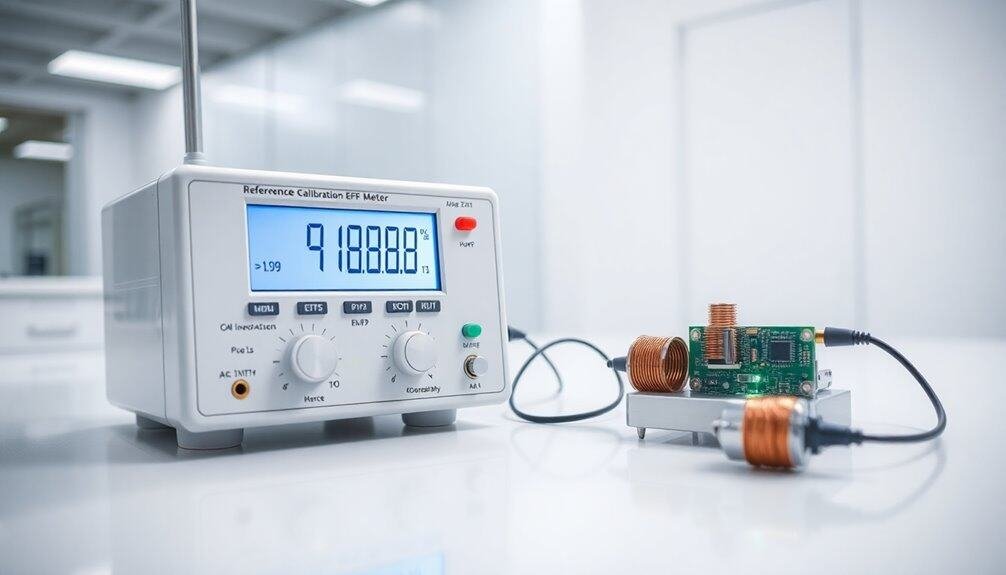
Calibration is essential for ensuring the accuracy and reliability of your EMF meter. Accurate readings are critical for trustworthiness in measurements.
Most modern EMF instruments have calibration intervals exceeding ten years or are lifetime guaranteed, provided they remain undamaged. Correct meter usage, alongside understanding measurement units, is crucial for obtaining precise results. Annual calibration may be unnecessary for solid-state devices, making it easier for users to maintain their equipment with less frequency.
Calibration maintains compliance with safety standards, ensuring units are presented in recognized formats like mW/cm². By reducing errors through standard adjustments, calibration greatly enhances overall accuracy.
Regular maintenance and adherence to manufacturer recommendations also prevent potential measurement discrepancies, ensuring consistent instrument performance in your measurements.
Key Calibration Methods for EMF Meters
Understanding the various calibration methods for EMF meters is essential to achieving accurate measurements. NIST-Traceable Calibration uses national standards for precise accuracy. Frequency Response Calibration checks the meter’s performance across 300 MHz to 6 GHz. Linearity Calibration guarantees consistent readings at different field strengths. Anisotropy Calibration accounts for directional sensitivity, providing accuracy regardless of orientation. Field Level Calibration assesses performance at specific field levels, like 5 V/m and 10 V/m. Utilizing reference probes, field generation facilities, and portable setups assures reliability in various environments. Each method plays a vital role in making sure your EMF meter delivers trustworthy results. Regular calibration follows ISO/IEC 17025:2005 guidelines to ensure high standards of accuracy and reliability.
Essential Calibration Parameters

To achieve precise readings with your EMF meter, you need to contemplate several critical calibration parameters. Focus on the frequency range, typically between 300 MHz and 6 GHz. Guarantee linearity at varying field strengths, generally from 10 to 20 V/m. Consider anisotropy, as response shifts with field direction. Maintain ideal ambient conditions, targeting temperatures of 18-25°C and humidity levels between 20-80%. Implement a solid calibration factor derived from maximum and minimum responses. Align the probe correctly for maximum reception. Regularly validate your data collection by using check standards or a secondary reference probe to enhance your calibration accuracy. Additionally, remember that the accuracy of EMF standards cannot exceed the accuracy of the standard used, which underscores the importance of meticulous calibration practices.
Step-by-Step Calibration Procedures
Achieving accurate EMF measurements requires following a structured calibration process.
Start by selecting an appropriate EMF meter for your measurement type. Review the user manual for specific calibration details. Confirm the zero point is set accurately and verify the appropriate excitation voltage is applied.
Align the measuring axis with your reference standard, confirming component stability. Utilize a known reference standard to adjust meter readings, documenting results throughout.
Gradually introduce controlled flow for calibration, then adjust settings for discrepancies. Perform multi-point calibrations to check linearity, and finalize by verifying consistent readings. This systematic approach guarantees reliable EMF measurements, ensuring you are aware of emf sources that may affect your results.
Utilizing Calibration Tools and Standards
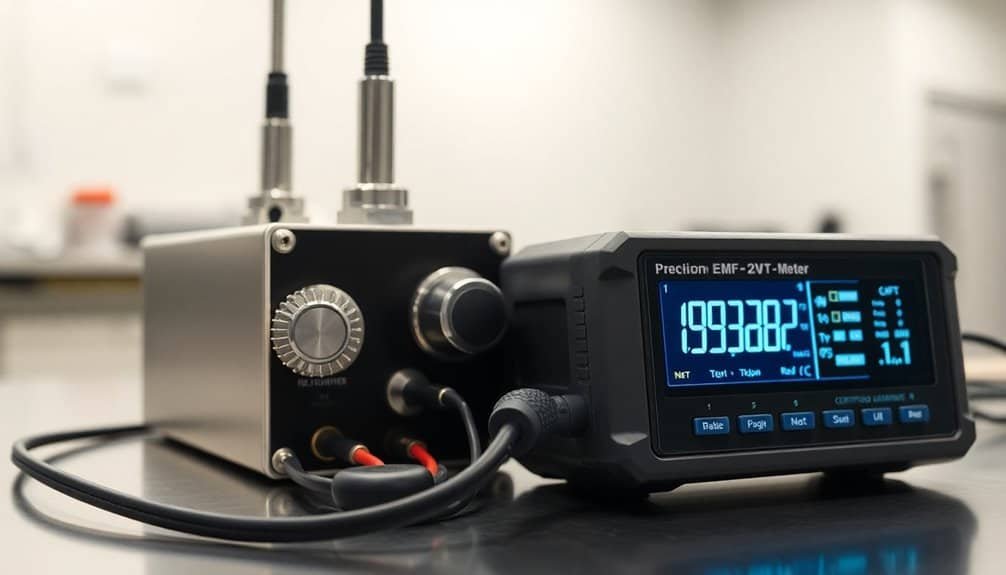
When calibrating your EMF meter, employing the right tools and adhering to established standards is essential for ensuring accuracy. Use isotropic probes for uniform signal capture across various directions.
Follow IEEE standards and specific frequency calibration guidelines like TEC/SD/DD/CAL-EMF/01/FEB-19, which cover ranges from 300 MHz to 6 GHz. Implement indirect measurement methods cautiously, as they can introduce inaccuracies.
Incorporate spectrum analyzers to gain detailed spectral information. Station calibration factors from reputable manufacturers to enhance measurement reliability. Conduct interlaboratory comparisons to affirm consistent standards in your calibration process.
Each component plays a vital role in the overall accuracy of your measurements.
Importance of Accurate Measurements
Accurate measurements of electromagnetic fields (EMF) are essential, especially in environments where exposure to radiation may pose health risks. When making decisions based on EMF levels, precise readings help distinguish between safe and harmful exposure.
Variability in meter readings can arise due to differences in devices and environmental conditions. Calibration reliability is critical, as not all meters receive proper calibration, impacting accuracy. Meters with different frequency weightings can yield inconsistent values.
Additionally, professional applications demand higher accuracy compared to general surveys. Understanding these factors guarantees informed choices, leading to better safety management and compliance in various settings. Regular monitoring of EMF radiation levels ensures effective management of exposure risks.
Maintaining Compliance and Safety Standards
Maintaining compliance and safety standards in environments with electromagnetic fields (EMF) is a vital aspect of guaranteeing worker and public health. Regulatory bodies, like the FCC and ICNIRP, set guidelines for exposure limits.
You must calibrate and test EMF meters per specific standards to guarantee accurate readings. Personnel need training on operating procedures and hazard awareness regarding EMF. Communication about risks and safety measures must remain clear and consistent. Keeping records of compliance documentation, including health assessments and monitoring exposure, is essential for ongoing safety evaluations. This structured approach guarantees adherence to regulations and protects individuals from potential health impacts, especially in areas with high EMF exposure.
Regular Validation and Instrument Maintenance
How do you guarantee your EMF meter consistently delivers reliable results?
Regular validation is key. Schedule calibration by professionals every decade or sooner if any damage occurs. This assures accurate assessments of magnetic, electric, and RF fields.
Verify your meter’s performance against a check standard to detect any drift. Maintain stable conditions during testing, controlling temperature and humidity.
Ascertain the meter measures correctly across its designed frequency range, considering anisotropy and linearity.
Regularly perform these tests to confirm the meter responds accurately at various field strengths, ultimately preventing misleading readings that could impact your measurements and assessments.
Frequently Asked Questions
How Often Should I Calibrate My EMF Meter?
You should calibrate your EMF meter regularly, depending on usage frequency and environmental conditions. If you use it often or in harsh settings, consider calibrating it more frequently to guarantee accurate readings.
Can I Perform Calibration Myself or Need a Professional?
Think of your EMF meter like a finely tuned instrument in an orchestra. You can perform basic self-calibration, but for precise accuracy—especially in critical situations—it’s wise to consult a professional for the best results.
What Are Signs That My EMF Meter Needs Calibration?
If your EMF meter shows fluctuating measurements, inconsistent results, or triggers alarms unexpectedly, it’s likely in need of calibration. Regular checks help guarantee accurate readings, preventing reliance on potentially misleading or faulty data.
Are There Regional Variations in Calibration Standards?
Just like a chameleon adapts to its surroundings, calibration standards vary regionally. You’ll find different frequency ranges and compliance protocols, so stay informed about local regulations to guarantee your measurements are accurate and reliable.
What Is the Cost of Calibrating an EMF Meter?
The cost of calibrating an EMF meter varies based on factors like service provider, frequency range, and whether it’s ISO-accredited. You should compare options to find what fits your budget and needs best.
Conclusion
Calibrating your EMF meter is essential for accuracy and safety. Regular checks and high-quality tools ensure reliable measurements and compliance with regulations. Neglecting calibration can lead to misleading results and potential risks. A precise EMF meter is crucial for making informed decisions, so embrace the calibration process to maintain accuracy.

